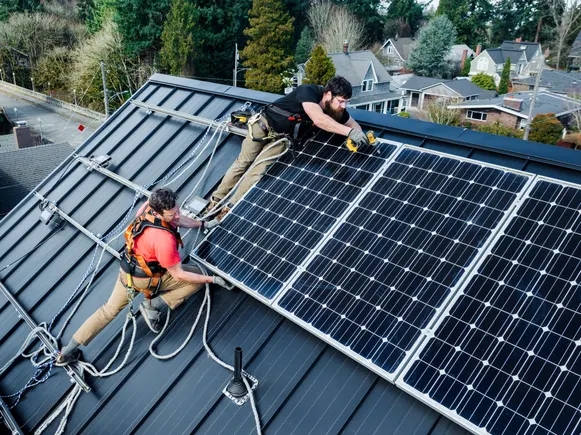From backup to backbone: Why utility-led DERs must drive MISO’s resource adequacy plans

Jigar Shah is managing partner at Multiplier, an advisory firm, and former director of the U.S. Department of Energy Loan Programs Office.
The United States is facing an unprecedented surge in electricity demand, projected to grow by more than 150 GW by 2030, rivaling energy expansions seen only during World War II. Our power grid must evolve faster than ever. The recent Federal Energy Regulatory Commission ruling and the submission of a revised fast-track interconnection process by the Midcontinent Independent System Operator underscore the critical need for innovative, scalable solutions that enhance resource adequacy.
One path forward lies in utility-led distributed energy resources (DERs), a model exemplified by Xcel Energy’s Distributed Capacity Procurement (DCP) program included in its 2024 integrated resource plan and mirrored by utility battery storage proposals from Exelon’s Maryland utilities in PJM. These programs highlight how utilities can approach deploying DERs like solar and storage up to ten times faster than traditional virtual power plant approaches, addressing load growth with precision, speed and scale.
Distributed energy resources have often been underused due to lack of predictability of use and the random siting of assets, issues that utility-led programs directly solve by integrating DERs into system planning. By strategically siting, deploying and dispatching distributed assets, utilities can provide flexible capacity that smooths peak demand, defers or replaces costly combustion turbines and peaker plants, and minimizes expensive transmission and distribution upgrades as demand grows rapidly.
This flexible, modular approach also narrows the uncertainty band around new generation buildout, enabling capacity to scale alongside real-time load growth while supporting economic expansion and community development. As DERs move from being mere “backup” resources to becoming the “backbone” of the power system, they provide an energy-dense, resilient and cost-stabilizing solution.
The U.S. Department of Energy’s 2025 “Pathways to Commercial Liftoff: Virtual Power Plants” report estimates that virtual power plants — aggregations of DERs — could serve 10% to 20% of peak electricity demand by 2030, offsetting 80 GW to 160 GW of capacity needs. Leveraging VPPs would also save an estimated $10 billion annually.
Xcel Energy's recent IRP settlement — unanimously approved by the Minnesota Public Utilities Commission — includes an intention to launch a DCP program and establishes Xcel as a forward-thinking leader on distributed energy resources in the MISO region. DCP’s model enables the utility to plan, procure and dispatch DERs with the speed and reliability necessary to meet emerging grid needs. Meanwhile, Exelon’s Maryland utilities — Baltimore Gas & Electric, Pepco and Delmarva Power — have also spotlighted similar utility-led DER programs in response to the Maryland Public Service Commission’s storage procurement request, illustrating broad applicability across markets.
These programs prioritize locally sited resources — solar, storage, demand response and more — to reduce congestion, enhance resilience through fractal reliability, improve utilization of the existing system and enable flexible load management in seconds. They leverage modular, pay-as-you-scale models that reduce the risk of stranded assets and align cost increases with real-time capacity needs, providing a strong economic foundation for continued DER growth. The DCP proposals build upon prior models of utility-ownership — like Green Mountain Power’s Energy Storage System program, launched in 2020 — by incorporating a planning element into DER deployment.
The MISO region has the opportunity to power new data centers and manufacturing. It also faces resource adequacy challenges. For the region’s utilities and regulators, this moment presents a pivotal opportunity to embed utility-led DER models like DCP in upcoming IRPs. These models operate within state jurisdictions and distribution systems where utilities have more control and accountability, allowing for a locally managed and optimized path to resource adequacy.
By embracing utility-led DER programs, MISO states can meet their growing capacity demands faster, cheaper and more flexibly while supporting broader decarbonization goals. This approach delivers on multiple priorities: cost stabilization, faster time to power, strong community development and a reliable, resilient grid capable of weathering future uncertainties.
To secure America’s energy future, MISO regulators and electric utility decision-makers must recognize that DERs are no longer an ancillary option; they must become a central strategy. Integrating utility-led DER programs into IRPs will transform distributed resources from backup options into the backbone of the power grid.
As our nation braces for unprecedented demand growth, the time to act is now. Let’s harness the innovation and expertise within our utilities to deploy DERs at scale, leveraging frameworks like Distributed Capacity Procurement, and create a resilient, affordable and sustainable energy future for all.
utilitydive





